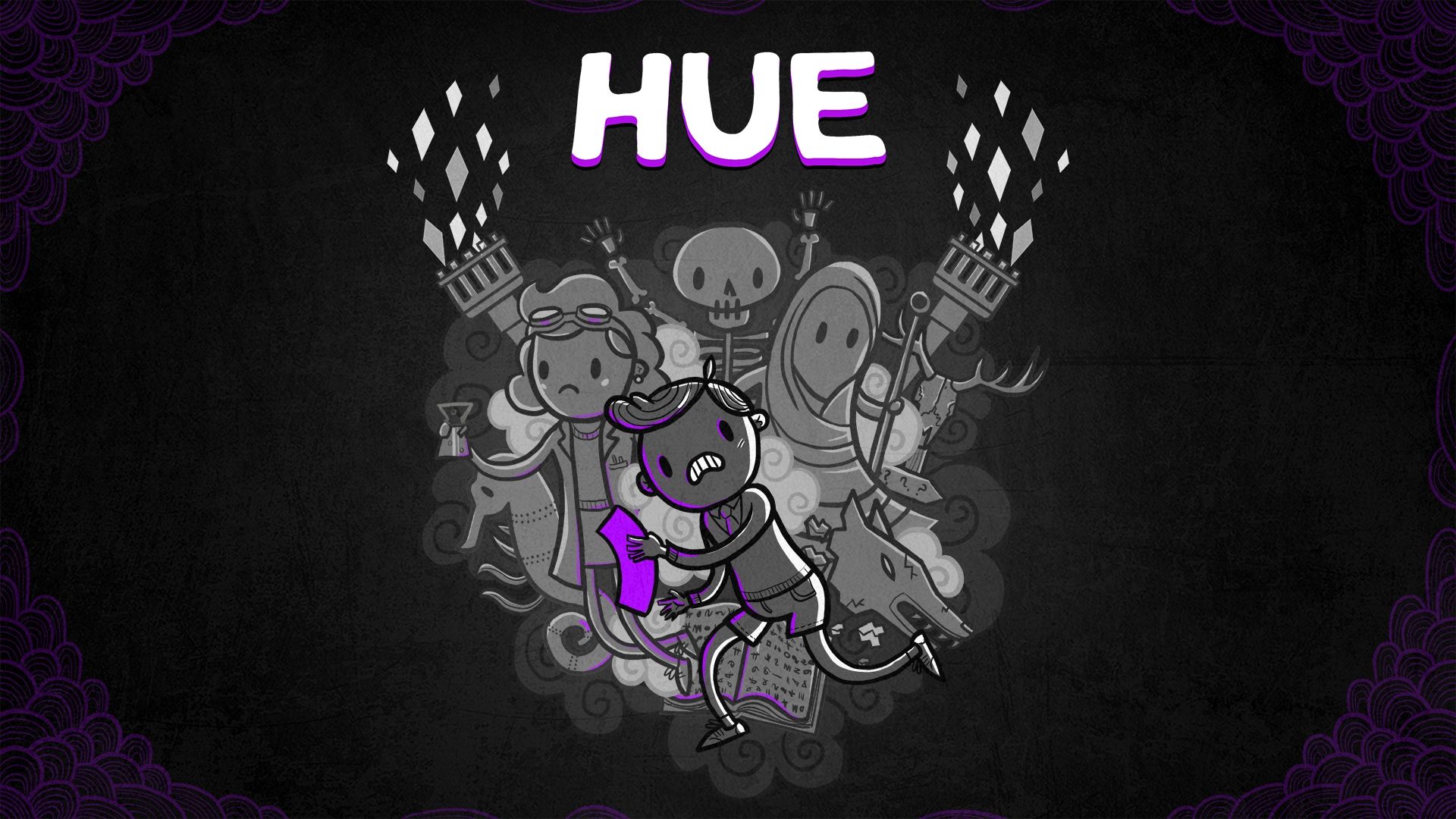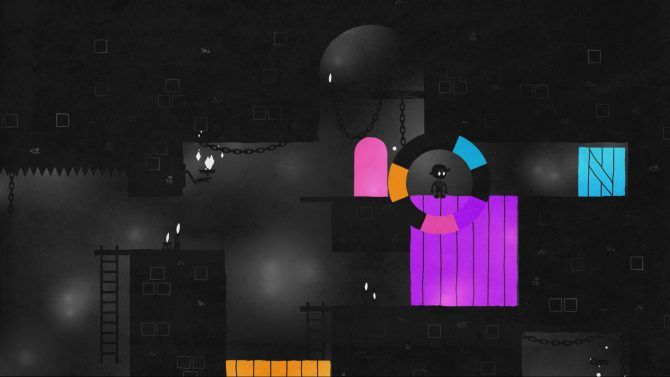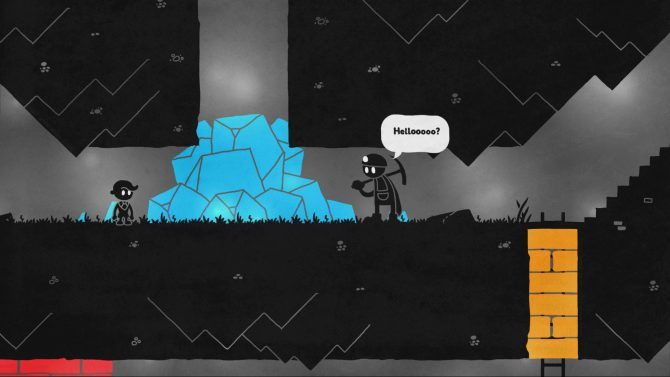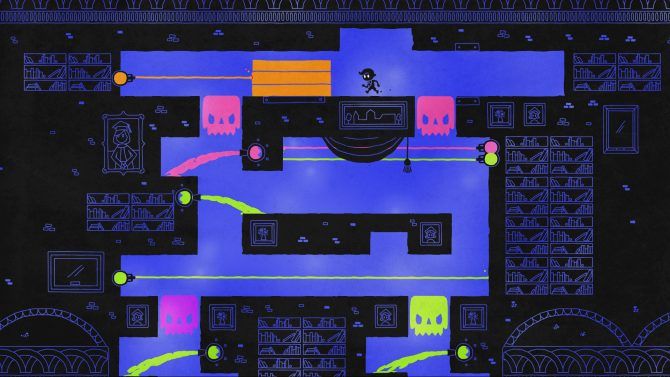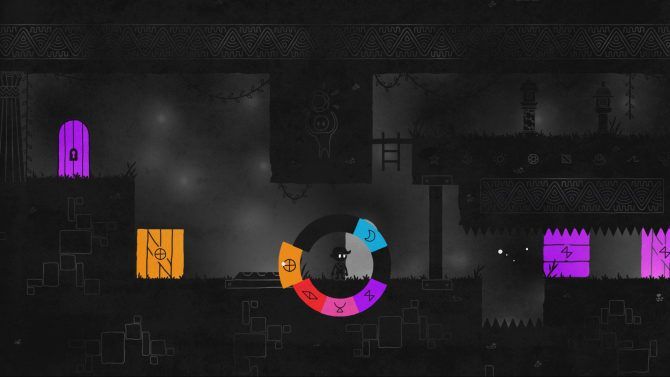When I first played Hue, I received the same vibe as my first experience with Playdead's Limbo. There was a sense of uneasiness and curiosity that kept me moving forward. Not too far into Hue, I obtained the power to change the background's color, a feature that lit up the Limbo-style world into its own unique environment.
I kept on playing hungrily, unlocking new colors, trying to figure out where the nefarious Dr. Grey was keeping my mother. While it is not without its problems, Hue is one of my most enjoyable indie experiences in a long time, and left a lasting impression with its deep themes, simplistic yet charming graphics, and unique gameplay.
Hue's gameplay is not very complex: the titular character, Hue, can jump and push/pull boxes, but the meat of the experience comes with his ability to change the color of the background. Almost immediately, the player is given the ability to do so. If the background is the same color as an object on screen, that object will disappear. This is the crux of most puzzles, with Hue having to change the background's color at the right time in order to create platforms, unblock passageways, and deactivate lasers. There are a total of eight colors to collect throughout the adventures, all used in distinct and interesting ways.
Hue constantly keeps the player engaged by adding new elements to puzzles. These can be as simple as changing the background so a box to climb on appears, to complicated puzzles where Hue must collect a key, flip switches, and dodge lasers. The game slows down when changing colors, and will not allow Hue to shift the colors if he is inside a currently absent object. While this was done to make sure that the color mechanic was not broken, the pause can occasionally mess a player's timing up on a jump or puzzle if they have to change colors mid-jump.
While the level design is usually top notch, a long level occasionally would raise the difficulty curve sharply. If Hue is hit even once, he is instantly killed. It can be quite aggravating to accidentally mess up and lose a few minutes of progress on a puzzle all for a simple mistake. It is still impressive that each room can be so varied, and you can tell that lots of effort was put into designing each room, no matter how big or how small.
Overall, Hue's gameplay is very enjoyable, and these problems only inconvenience progression temporarily. A lot of thought was put into every puzzle, and every time I reached the end of a level, I was anticipating what would come next. The color mechanic even adds a light Metroidvania element to the game, allowing players to go back to previous puzzles and collect 28 secret vials hidden throughout the game's world. It is nice to see such an interesting mechanic be pulled off so well.
Hue's story is also surprisingly thought-provoking. The main character's mother was trapped by the evil Dr. Grey, making her invisible to the human eye, which in this world can only see black and white. Because of this, Hue sets out on a quest to save his mother, and along the way gains the ability to see and control color, which was the crux of his mother's research. Due to living in a black and white world, many looked down upon color, making her research very secretive and risky.
Throughout the game, the player learns more about his mother's experiences through letters he finds. As Hue discovers more and more about his mother's research, the letters start to raise questions on the concepts of trust, perception, and reality. The lines are delivered superbly in a voice-over from Hue's mother, and the writing is full of thought and humor. I was left thinking about Hue long after I stopped playing, a commendable accomplishment for a seemingly innocent puzzle game.
The game's graphical style, while nothing complex, is also executed quite well. Hue and the few other characters he meets are animated with careful detail, and the world is designed in such a memorable way that it will absorb the player for its short playtime. The colors, when present, are quite vibrant and nice to look at. Hue even features a colorblind mode that assigns symbols to each color. It is nice to see the developers accommodate players who might not normally be able to play a game like this.
Hue is a pretty short adventure, only clocking in at around five hours. The being said, they are a very enjoyable five hours, and time will most likely vary depending on the how quickly one can solve each puzzle. Going back to collect all of the vials will easily add a few hours to the experience. For only $15, you easily get your money's worth out of Hue.
Hue came out of almost nowhere and shocked me with its sublime design. While it might seem like Limbo at first, the game is able to establish itself on its own fairly quickly and create a distinct and memorable experience. Fans of puzzle platformers will find a lot to enjoy in this game, as well as those who just want a new and fresh indie title to play. While the gameplay still needs a few tweaks, the thought-provoking story and level design take advantage of its mechanics and create an experience wholly unlike any other.

